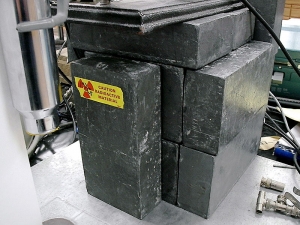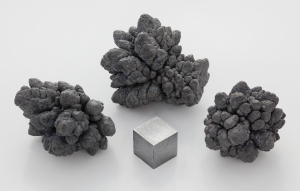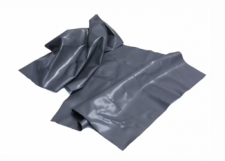what type of shielding can be used to protect against gamma rays?
What are the different types of radiation shielding materials?

Radiation shielding materials are used for a diversity of radiologic applications. "The use of radiations in diagnosing and treating patients has significantly advanced the field of medicine and saved or extended endless lives¹." Advances in engineering and more than sophisticated applications have improved standard treatments for the benefit of the patient. Radiation use does, all the same, come with risks. "Those who use radiation must be adequately trained in radiation safety, radiation physics, the biologic effects of radiation, and injury prevention to ensure patient safety¹." One of the three major principles of mitigating external radiation exposure is shielding, "Using absorber material such every bit Plexiglas for beta particles and lead for X-rays and gamma rays is an constructive way to reduce radiations exposure²."
Radiation Shielding Materials
Historically, radiation shielding materials have been manufactured from lead (Pb). Lead shielding, often used in a multifariousness of applications including diagnostic imaging, radiation therapy, nuclear and industrial shielding. For the purpose of this mail, we will focus on the three different types of materials used in manufacturing x-ray attenuating garments such every bit aprons, vests, and skirts.
Radiation Shielding Materials
Radiation shielding garments are commonly used to protect medical patients and workers from direct and secondary radiations during diagnostic imaging in hospitals, clinics and dental offices³. Historically, the attenuating qualities of lead made it "the element of option" for radiation protection. However, advances in radiations shielding material technology have produced two alternative materials, lead composite and lead-gratis radiation shielding. At present medical professionals have several options when it comes to selecting their radiation shielding garments.
Traditional Lead (Pb) Shielding

Atomic number 82 is a chemical element in the carbon group with the symbol Pb and atomic number 82. Pb is a soft, malleable and corrosion-resistant cloth³. The loftier density of lead (11.34 grams per cm³) makes it a useful shield confronting X-ray and gamma-ray radiation. Lead, in its pure form, is brittle and cannot be worn every bit apparel. To transform pure pb into a vesture radiations shielding material information technology's mixed with binders and additives to make a flexible lead vinyl canvas. The lead sheets are then layered to the desired thickness to achieve the required pb equivalency and incorporated into the radiation shielding garment. At that place are typically three standard levels of atomic number 82 equivalency protection for traditional pb radiation shielding garments including 0.25mm, 0.35mm and 0.5mm.
Atomic number 82 (Pb) Blended Shielding
Lead blended shielding is a mixture of pb and other lighter weight metals. These lead-based composite blends are a proprietary mixture of lead and other heavy metals that benumb radiations. The lead composite alloy will vary by manufacturer equally they take adult their own proprietary blends that may include a mixture of lead, tin, prophylactic, PVC vinyl and other proprietary attenuating metals. The lead-based composite blend radiation shielding garments are lighter (up to 25%) than regular class pb and are bachelor with the same lead equivalency protection levels.
Non-Lead (Pb) and Atomic number 82 (Lead) Costless Shielding
Like to the proprietary blends of lead-based composite shielding materials the non-lead and lead-free shielding materials offer the same protection levels. Non-lead shielding materials are manufactured with additives and binders mixed with attenuating heavy metals that fall into the same category of materials as lead that also blot or block radiations. These metals may include tin (Sn), antimony (Sb), tungsten (W) bismuth (Bi) or other elements. Not-lead aprons and atomic number 82-free aprons are recyclable and safe for not-hazardous disposal. The material blends are propriety to the specific manufacturer; therefore; the materials mentioned above are not representative of whatsoever specific manufacturer.
Benefits of Shielding Options

The three cadre material options discussed all accept their ain unique benefits and features. There are several factors you will desire to consider when making your decision, including the specific process being performed, length of the process, and frequency of the process. To determine the proper amount of protection required in your working surroundings contact your radiation prophylactic officeholder or radiations physicist. Selecting the right radiation shielding garment begins past identifying the cadre textile choice right for you.
(Part 2) How to determine which x-ray frock cloth is right for yous
In our next post, nosotros will discuss how to make up one's mind which x-ray apron cloth is correct for you. If you have any questions, delight feel free to contact u.s..
Explore Our Pb Aprons
Reader Interactions
cunninghamprif1967.blogspot.com
Source: https://blog.universalmedicalinc.com/3-different-types-radiation-shielding-materials/
0 Response to "what type of shielding can be used to protect against gamma rays?"
Post a Comment